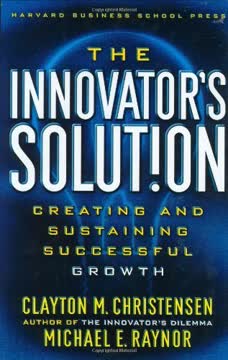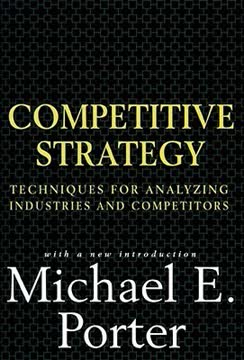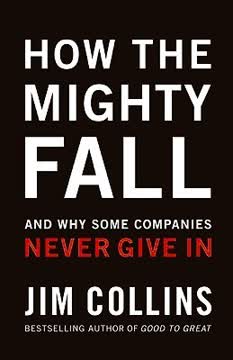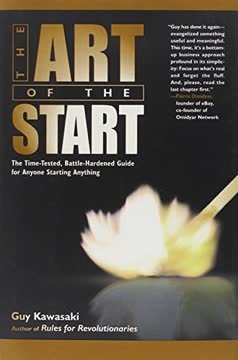重点摘要
1. 创造意义:伟大组织的基础
创办一个组织的最佳理由是创造意义——创造一个让世界变得更美好的产品或服务。
目标驱动成功。 伟大的组织建立在意义的基础上,而不仅仅是利润。它们旨在以某种方式改善世界,无论是提高生活质量、纠正错误,还是保护某些美好的事物。这个核心目标激励员工,吸引客户,并指导决策。
意义在不同类型的组织中表现不同:
- 盈利公司:开发创新产品或服务
- 非营利组织:解决社会问题或未满足的需求
- 学校:教育和赋能未来一代
- 宗教组织:提供精神指导和社区
通过专注于创造意义,企业家为他们的组织存在提供了一个超越财务收益的令人信服的理由。这个更深层次的目标成为推动组织前进的动力,即使在挑战时期也是如此。
2. 制定强有力的口号,而非使命声明
忘掉使命声明吧;它们冗长、乏味且无关紧要。没有人能记住它们,更不用说实施了。相反,把你的意义变成一个口号。
简洁是关键。 口号是一个简短、易记的短语,捕捉了你组织的核心目标。与冗长的使命声明不同,口号易于员工内化并传达给客户。
强有力的口号示例:
- 耐克:“真实的运动表现”
- 迪士尼:“有趣的家庭娱乐”
- 星巴克:“奖励日常时刻”
创建你的口号:
- 将你组织的目标提炼成2-4个词
- 使其以行动为导向并关注客户
- 避免使用“卓越”或“领导力”等通用术语
- 测试它:你的员工和客户是否理解并受到启发?
一个精心制作的口号可以作为决策的指引灯,并帮助组织中的每个人朝着共同的目标前进。
3. 开始行动:发布,然后测试
想想焊接铁、编译器、锤子、锯子和AutoCAD——无论你用什么工具来构建产品和服务。不要专注于推销、写作和计划。
行动胜于完美。 许多企业家陷入无休止的计划和完善中。相反,专注于创建一个最小可行产品或服务并迅速推向市场。这种方法使你能够收集真实世界的反馈并根据实际客户需求进行迭代。
开始行动的步骤:
- 构建产品/服务的原型或基本版本
- 向一小部分早期采用者推出
- 收集使用情况和痛点的反馈和数据
- 根据这些真实世界的信息进行迭代和改进
- 重复这个过程,每次迭代扩大你的影响范围
通过早期和频繁发布,你可以:
- 用真实客户验证你的概念
- 更早生成收入和数据
- 避免在不需要的功能上浪费资源
- 超越仍在计划的竞争对手
记住:拥有一个在市场上的好产品比一个从未发布的完美产品要好。
4. 掌握推销的艺术
忘掉“我思故我在”。对于企业家来说,重要的短语是“我推销,故我在”。
推销至关重要。 无论你是在寻求投资、达成销售还是招聘员工,有效传达你的愿景的能力都是至关重要的。一个好的推销应该简洁、有说服力,并针对你的受众量身定制。
有效推销的关键要素:
- 在第一分钟内解释你在做什么
- 使用“小人”技巧:对每个陈述回答“那又怎样?”
- 展示,而不仅仅是讲述:使用故事和演示
- 遵循10/20/30规则:
- 10张幻灯片
- 20分钟
- 最小30号字体
不断练习你的推销:
- 在向关键利益相关者展示之前,至少进行25次迭代
- 从导师、同事和潜在客户那里寻求反馈
- 根据受众的反应进行改进和调整
记住:你的推销通常是人们对你组织的第一印象。通过清晰、简洁和有说服力的表达来让它变得重要。
5. 自力更生走向成功
事先回答这样的问题几乎是不可能的,而且它们最终毫无意义。
资源fulness是关键。 自力更生意味着用有限的资源建立你的业务,专注于现金流而不是外部投资。这种方法迫使你创造性、有效率,并专注于真正重要的事情。
自力更生的策略:
- 作为服务型企业开始,以产生即时现金流
- 注重功能而非形式(例如,廉价的办公空间,二手设备)
- 外包非核心功能
- 利用免费或低成本的营销渠道
- 优先考虑创收活动
自力更生的好处:
- 保持对公司控制权和股权
- 培养精益、高效的心态
- 在寻求外部投资之前验证你的概念
- 培养韧性和解决问题的能力
记住:许多成功的公司,包括苹果、戴尔和eBay,都是从自力更生开始的。通过专注于用有限的资源创造价值,你为长期成功奠定了更坚实的基础。
6. 招募A类人才和感染者
我从未想过为了声誉和荣誉而写作。我心中所想必须表达出来;这就是我创作的原因。
团队是关键。 你组织的成功在很大程度上取决于你招募的人的质量。专注于招募不仅有技能而且对你的使命充满热情的A类人才。
A类人才的特征:
- 在其领域内的高能力
- 强烈的工作伦理和自我激励
- 良好的团队合作能力
- 与你组织的价值观和使命一致
寻找“感染者”:
- 那些已经使用并喜爱你的产品/服务的人
- 对解决你所关注的问题充满热情的人
- 愿意降薪加入你的使命的人
招聘策略:
- 利用你的网络进行推荐
- 超越传统简历和学历背景
- 为候选人提供展示其技能的机会
- 在技术技能之外优先考虑文化契合度和热情
记住:一小群A类人才可以超越一大群平庸的团队。投入时间和精力寻找和留住合适的人才。
7. 明智地筹集资金并首先建立业务
如果你想获得投资,展示你将建立一个业务。创造意义。做出改变。不要为了钱而做。做是因为你想让世界变得更美好。
专注于基础。 虽然筹集资金可以加速增长,但它不能替代建立一个稳固的业务。投资者被有实际进展的公司所吸引,而不仅仅是好点子。
在寻求投资之前:
- 开发一个可行的产品或服务
- 产生收入并展示市场需求
- 建立一个强大的团队和顾问委员会
- 制定一个清晰的业务扩展计划
在筹集资金时:
- 选择与你的愿景一致并能提供超越资金价值的投资者
- 了解不同资金来源的权衡(例如,风险投资与天使投资者)
- 准备好阐明你的商业模式、市场机会和增长策略
- 不要过高估值你的公司或过早放弃太多股权
记住:吸引投资者的最佳方式是建立一个不需要他们的业务。专注于创造价值,资金自然会跟随。
8. 为电子表格原因和互惠互利建立合作伙伴关系
良好合作伙伴关系的基础是电子表格原因,你会明白下一步是定义可交付成果和目标,如额外收入、降低成本、新产品和服务、新客户、新地理市场、新支持计划、培训和营销计划。
战略合作伙伴关系加速增长。 有效的合作伙伴关系可以帮助你进入新市场,开发新产品,或获取你无法单独获得的资源。然而,它们必须建立在互惠互利和明确目标的基础上。
成功合作伙伴关系的关键要素:
- 明确的目标和期望
- 互补的优势和资源
- 愿景和价值观的一致性
- 双方共赢的结构
- 定期沟通和绩效跟踪
建立有效合作伙伴关系的步骤:
- 确定可以帮助你实现特定业务目标的潜在合作伙伴
- 为双方制定一个清晰的价值主张
- 从小规模、低风险的合作开始以建立信任
- 通过明确的协议和指标正式化合作伙伴关系
- 定期审查和调整合作伙伴关系
记住:合作伙伴关系应增强你的核心业务,而不是分散注意力。专注于直接有助于你的战略目标和底线的合作。
9. 通过福音传播和社区建设品牌
福音传播者像你一样相信你的产品或服务,他们想为你和与你一起推进战斗。
客户是你最好的营销人员。 建立强大的品牌不仅仅是广告;它是关于为你的产品或服务创造热情的倡导者。专注于将客户转变为福音传播者,他们将传播信息并围绕你的品牌建立社区。
建立品牌福音传播者的策略:
- 创造一个解决实际问题的卓越产品或服务
- 在每个接触点提供卓越的客户体验
- 积极与客户互动并听取他们的反馈
- 赋予客户分享他们的体验(例如,用户生成内容)
- 认可和奖励你最忠实的客户
建立品牌社区:
- 创建客户连接的平台(例如,在线论坛,活动)
- 分享幕后内容和公司故事
- 让客户参与产品开发和决策
- 庆祝客户的成功故事和里程碑
记住:强大的品牌建立在与客户的信任和真实关系之上。专注于创造价值和培养联系,你的社区将成为你最强大的营销资产。
10. 让它下雨:找到你的大市场
播种许多种子。看看哪些生根发芽并开花。培养这些市场。
适应性驱动成功。 虽然有一个目标市场是重要的,但要对意外的机会保持开放。你的产品或服务可能在你从未预料到的市场中取得成功。
寻找和利用“大市场”的策略:
- 将你的产品/服务推向不同的客户群体
- 密切监控使用模式和客户反馈
- 寻找意外的用例或客户类型
- 根据市场反应愿意转向或扩大你的重点
- 加倍努力在高潜力的新兴机会
在意外市场中取得成功的公司示例:
- Slack:最初是一个游戏公司的内部工具,成为广泛使用的商业通信平台
- Play-Doh:最初是墙纸清洁剂,后来被重新定位为儿童玩具
- Viagra:最初开发为心脏药物,后来成为治疗勃起功能障碍的药物
记住:成功往往来自对可能性的开放和迅速适应市场反馈。保持警惕,发现意外的机会,并准备好在它们出现时加以利用。
最后更新日期:
FAQ
What's "The Art of the Start" about?
- Guide for Entrepreneurs: "The Art of the Start" by Guy Kawasaki is a comprehensive guide for anyone looking to start a business, organization, or project. It provides practical advice and strategies for launching and managing a successful startup.
- Focus on Execution: The book emphasizes the importance of execution over planning, encouraging entrepreneurs to take action and learn from real-world experiences rather than getting bogged down in theoretical planning.
- Key Areas Covered: It covers various aspects of starting a business, including creating a business model, pitching to investors, branding, and building a team.
- Entrepreneurial Mindset: Kawasaki also discusses the mindset required for entrepreneurship, including the importance of making meaning, being a mensch, and embracing failure as a learning opportunity.
Why should I read "The Art of the Start"?
- Practical Advice: The book offers time-tested, practical advice that is applicable to a wide range of startup endeavors, from tech companies to non-profits.
- Experienced Author: Guy Kawasaki draws on his extensive experience as a venture capitalist and former Apple evangelist, providing insights that are both strategic and tactical.
- Comprehensive Coverage: It covers all stages of starting a business, from ideation to execution, making it a valuable resource for both new and seasoned entrepreneurs.
- Inspiration and Motivation: The book is not just about business tactics; it also aims to inspire and motivate readers to pursue their entrepreneurial dreams with passion and purpose.
What are the key takeaways of "The Art of the Start"?
- Make Meaning: The best reason to start an organization is to make meaning, not just money. This involves creating products or services that make the world a better place.
- Get Going: Focus on execution rather than endless planning. Start creating and delivering your product or service as soon as possible.
- Bootstrap: Manage for cash flow, not profitability, in the early stages. This involves keeping costs low and focusing on generating revenue quickly.
- Build a Great Team: Hire A players who are better than you and who believe in the mission of your organization.
What is the "10/20/30 Rule" in "The Art of the Start"?
- Ten Slides: Kawasaki suggests that a pitch should contain no more than ten slides. This forces entrepreneurs to focus on the most important aspects of their business.
- Twenty Minutes: The presentation should last no longer than twenty minutes, allowing time for discussion and questions.
- Thirty-Point Font: Use a font size of at least thirty points to ensure that the text is readable and that the slides are not overcrowded with information.
- Purpose: The rule is designed to keep pitches concise, clear, and engaging, making it easier for the audience to understand and remember the key points.
How does Guy Kawasaki define a "Mensch" in "The Art of the Start"?
- Ethical and Admirable: A mensch is someone who is ethical, decent, and admirable. It is the highest form of praise one can receive.
- Help Others: A mensch helps people, especially those who cannot help them in return, deriving intrinsic joy from doing so.
- Do What's Right: They take the high road, observing the spirit of agreements and focusing on what is important rather than what is expedient.
- Pay Back Society: A mensch pays back society for the goodness they have received, using various currencies like time, expertise, and emotional support.
What is the "Hierarchy of Traction" in "The Art of the Start"?
- Sales as Traction: The highest form of traction is actual sales, which demonstrate that people are willing to pay for your product or service.
- Field Testing: If sales are not yet possible, having your product in field testing or pilot sites is the next best form of traction.
- Agreements to Test: Agreements to field test or pilot your product before it is fully developed also show traction.
- Contact for Testing: At the very least, having established contacts for potential field tests indicates some level of traction.
What are the best quotes from "The Art of the Start" and what do they mean?
- "Make Meaning": This quote emphasizes the importance of creating products or services that have a positive impact on the world, rather than just focusing on profit.
- "Get Going": This encourages entrepreneurs to take action and start executing their ideas, rather than getting stuck in endless planning.
- "A good plan today is better than a perfect plan tomorrow": This highlights the value of timely execution over waiting for the perfect moment or plan.
- "The best reason to start an organization is to make meaning": This underscores the book's central theme that meaningful work is the most powerful motivator for success.
How does "The Art of the Start" suggest handling competition?
- Acknowledge Competition: Recognize that competition validates the market and shows that there is demand for your product or service.
- Differentiate Clearly: Focus on what makes your product or service unique and communicate this clearly to your audience.
- Position Against Leaders: Use the established brand awareness of competitors to your advantage by positioning your product as a better alternative.
- Embrace Competition: Understand that a moderate level of competition is beneficial as it pushes you to improve and innovate.
What is the role of evangelism in "The Art of the Start"?
- Spread the Word: Evangelists are passionate believers in your product or service who help spread the word and build a community around it.
- Recruit Evangelists: Actively recruit customers who are enthusiastic about your product and empower them to share their experiences.
- Provide Tools: Give evangelists the tools they need to effectively promote your product, such as information, promotional materials, and support.
- Build a Community: Foster a community of evangelists who can provide customer service, technical support, and social relationships that enhance the user experience.
How does "The Art of the Start" address the concept of bootstrapping?
- Cash Flow Focus: Manage for cash flow rather than profitability in the early stages to ensure the business can sustain itself.
- Bottom-Up Forecasting: Use realistic, bottom-up forecasting to plan for growth and manage resources effectively.
- Start as a Service Business: Consider starting as a service business to generate immediate cash flow and fund product development.
- Understaff and Outsource: Keep the team lean and outsource non-core functions to maintain flexibility and control costs.
What is the significance of "Let a Hundred Flowers Blossom" in "The Art of the Start"?
- Embrace Unintended Uses: Be open to unintended uses and customers for your product, as they can lead to unexpected opportunities and markets.
- Adapt to Market Feedback: Use real-world feedback to adapt and refine your product or service, rather than sticking rigidly to initial plans.
- Focus on Blossoming Markets: Pay attention to where your product is gaining traction and focus efforts on nurturing those markets.
- Flexibility is Key: Maintain flexibility in your business strategy to capitalize on emerging opportunities and changing market conditions.
What is the "Red Pill" concept in "The Art of the Start"?
- Face Reality: Taking the "red pill" means facing the harsh realities of your business and being honest about its challenges and opportunities.
- Ask Tough Questions: Regularly ask tough questions about your product, market, competition, and team to ensure you are on the right track.
- Embrace Realism: Embrace realism in your business decisions and be willing to make necessary changes based on factual assessments.
- Morpheus Role: Have a "Morpheus" in your organization who can deliver the red pill and provide a reality check when needed.
评论
《创业的艺术》因其对创业的实用建议而广受好评,尽管有些人认为它过时或过于专注于科技初创企业。读者欣赏川崎的直白、幽默的写作风格以及在推销、自筹资金和品牌塑造等话题上的可操作性见解。许多人认为这本书对于任何开始创业或项目的人来说都是一个宝贵的资源,赞扬其强调意义和行动的重要性。批评者认为其中一些建议显而易见或过于特定领域,但总体而言,这本书因其激励性和信息丰富的内容而受到推荐。
Similar Books
















